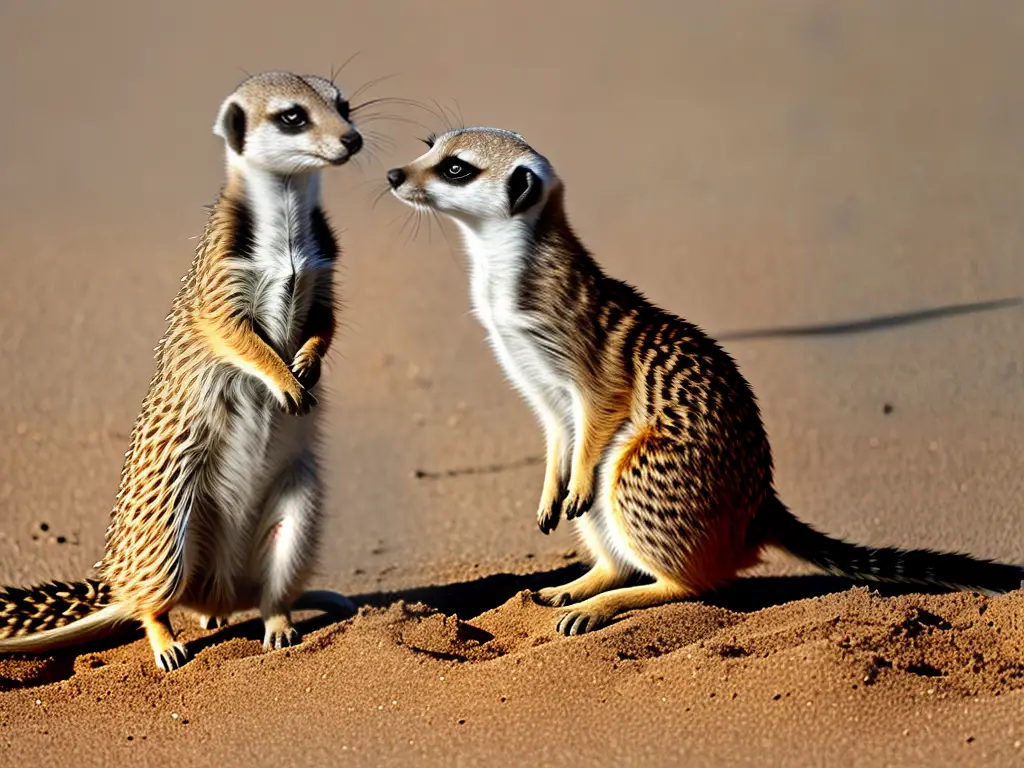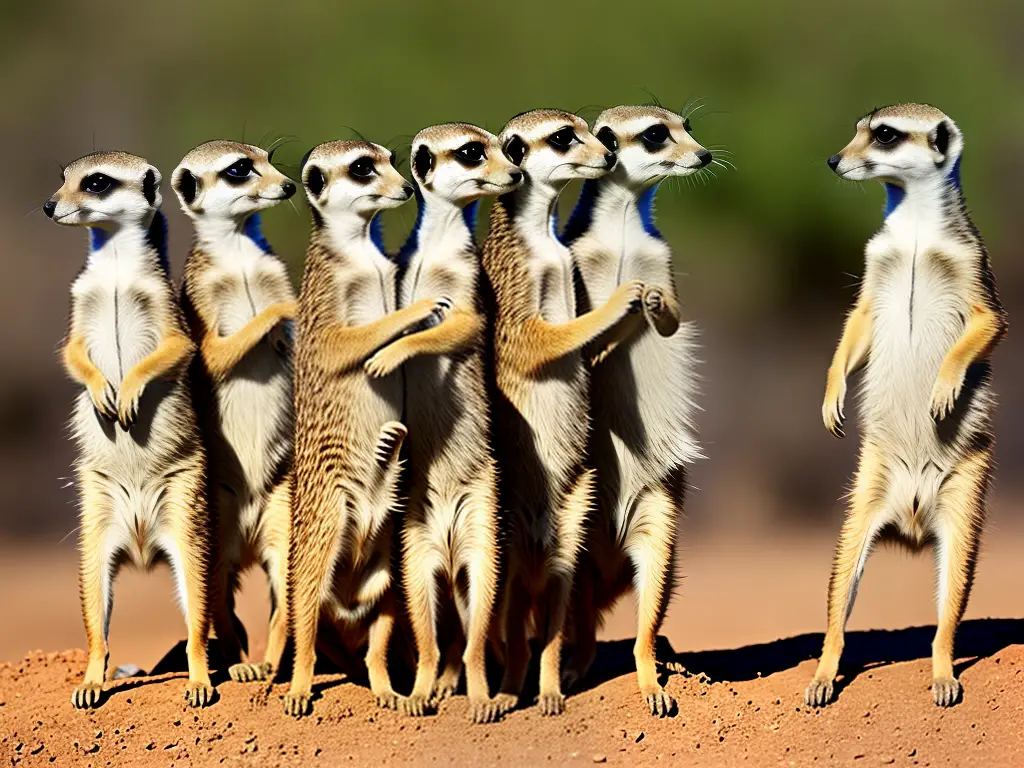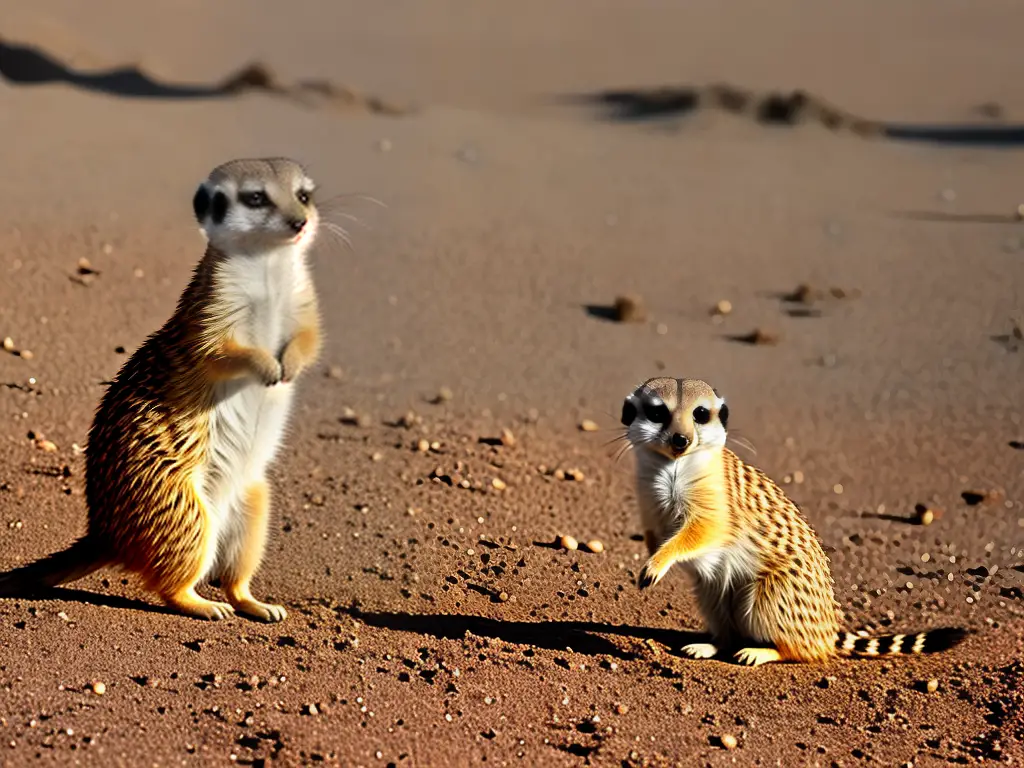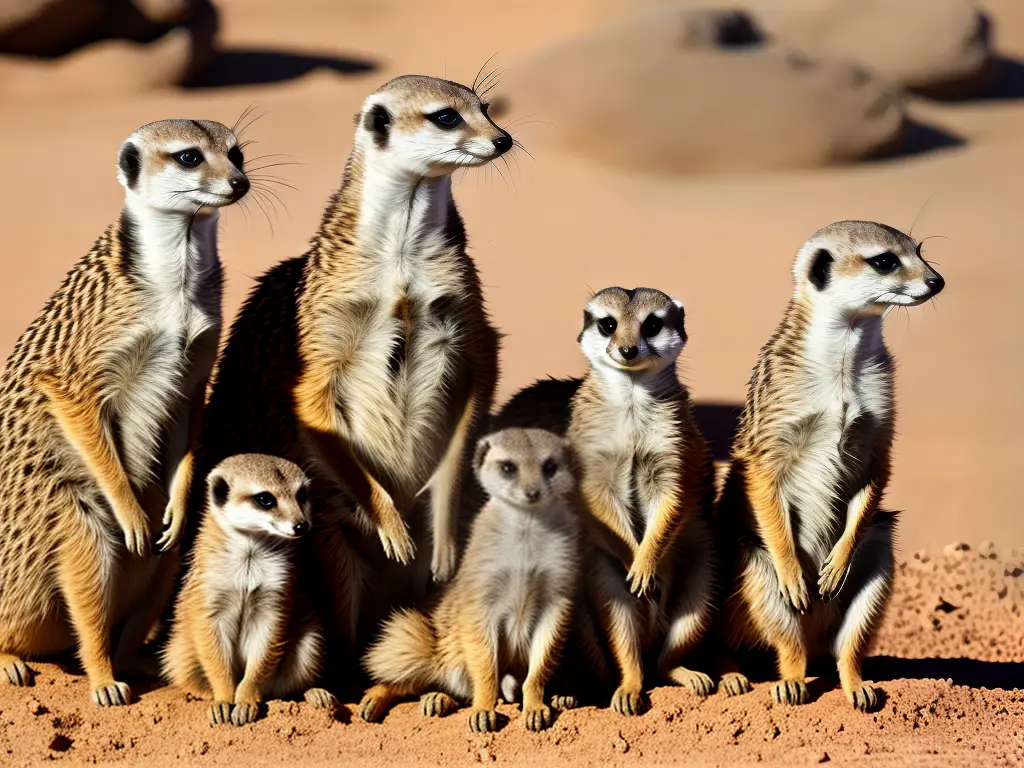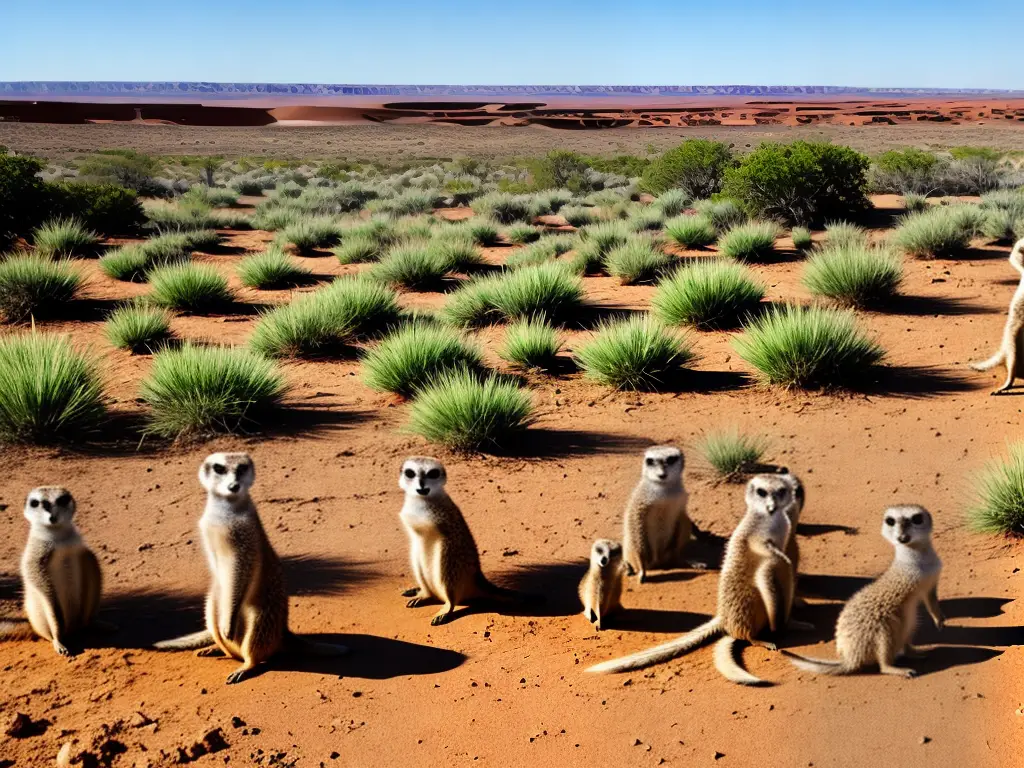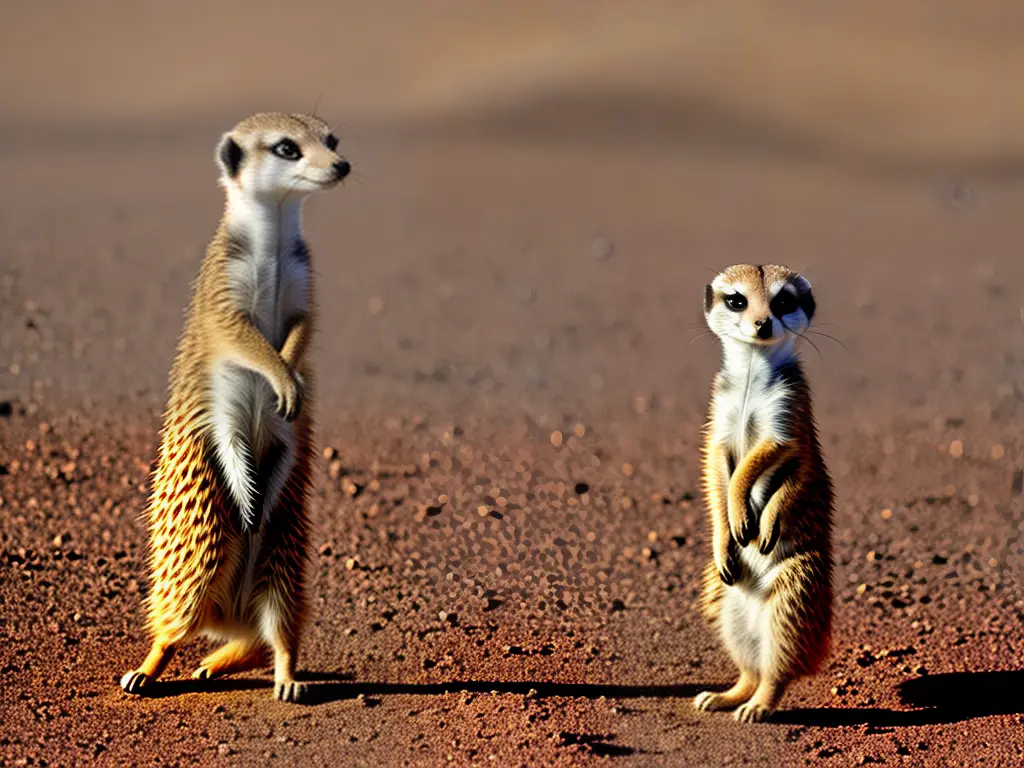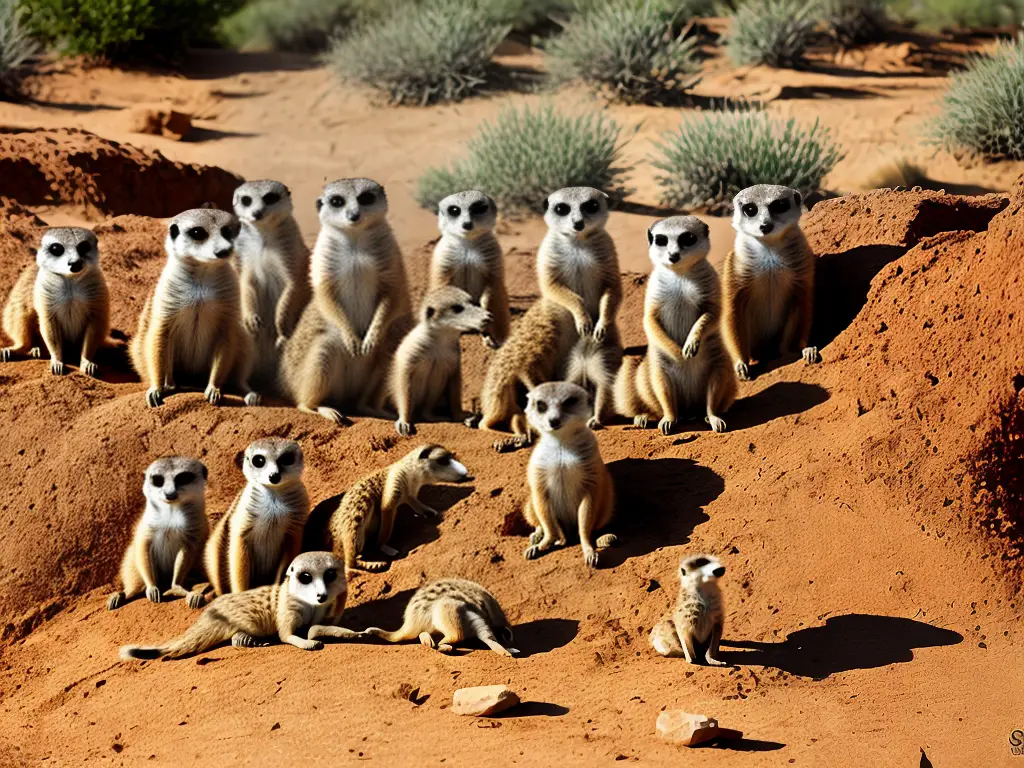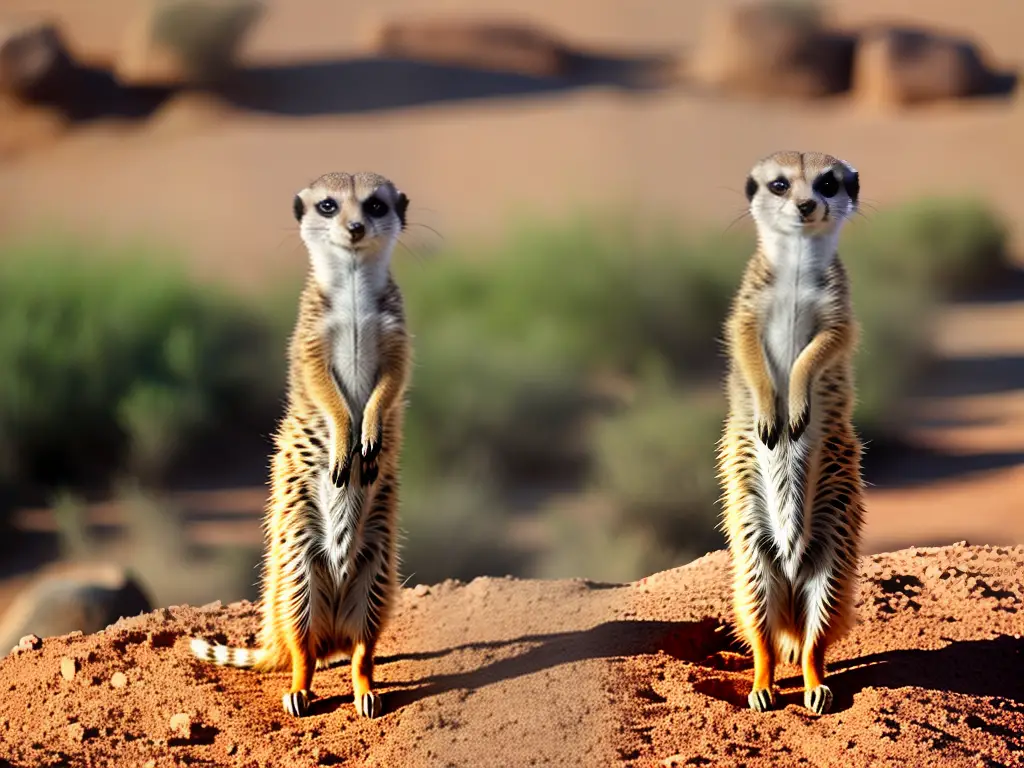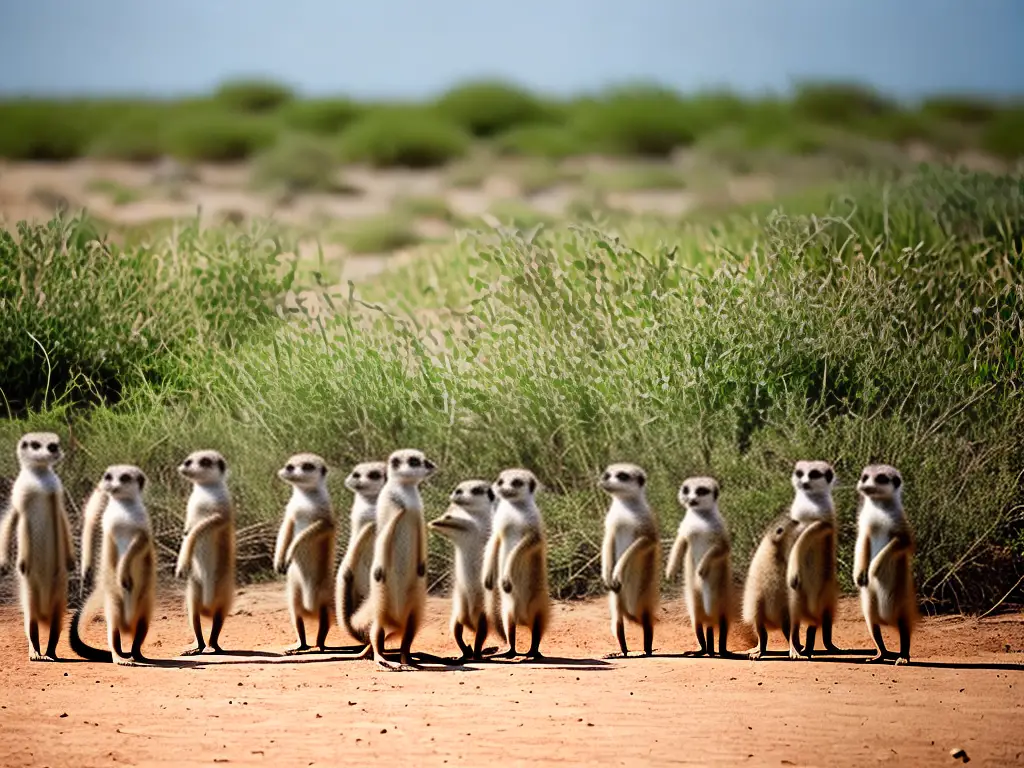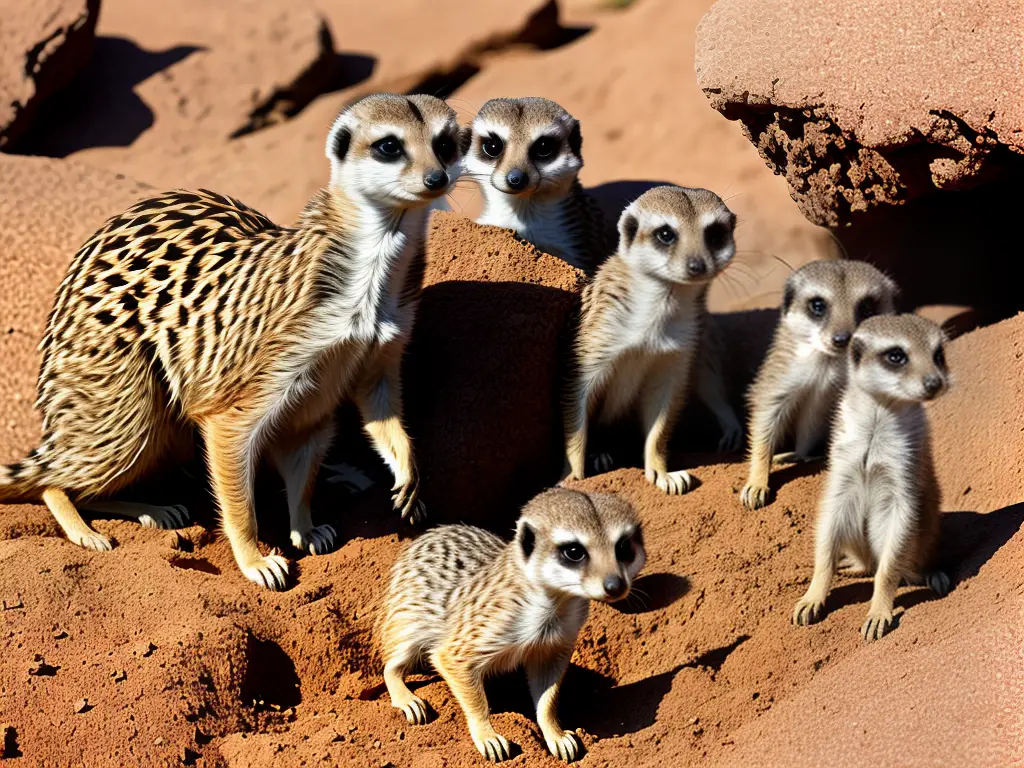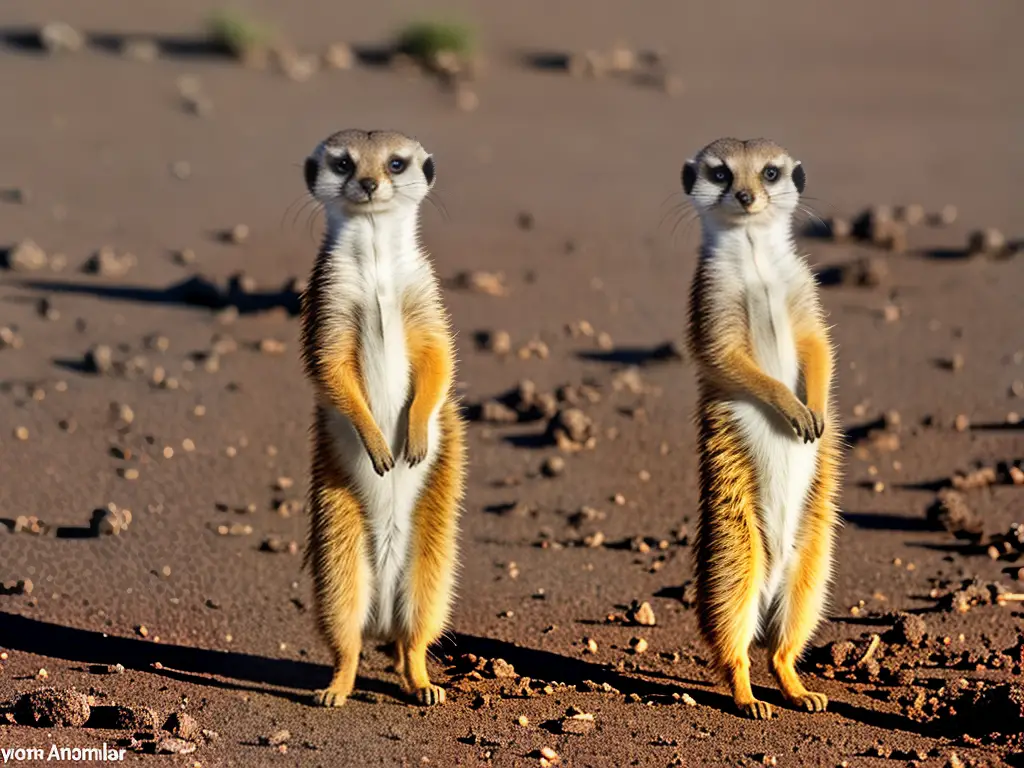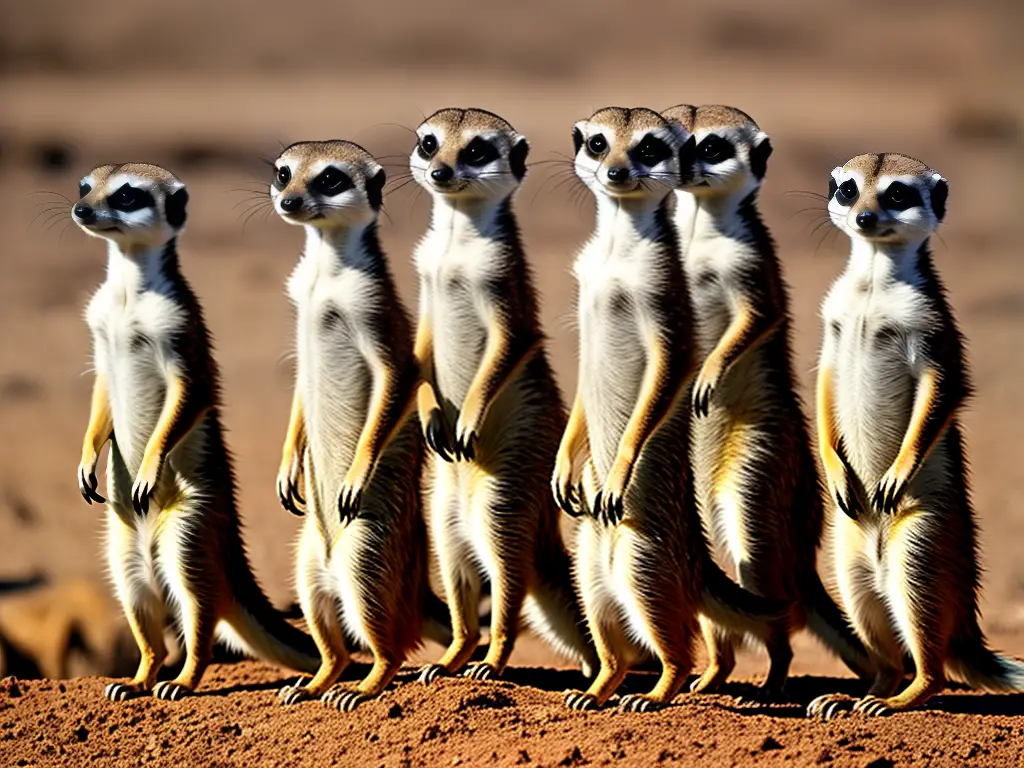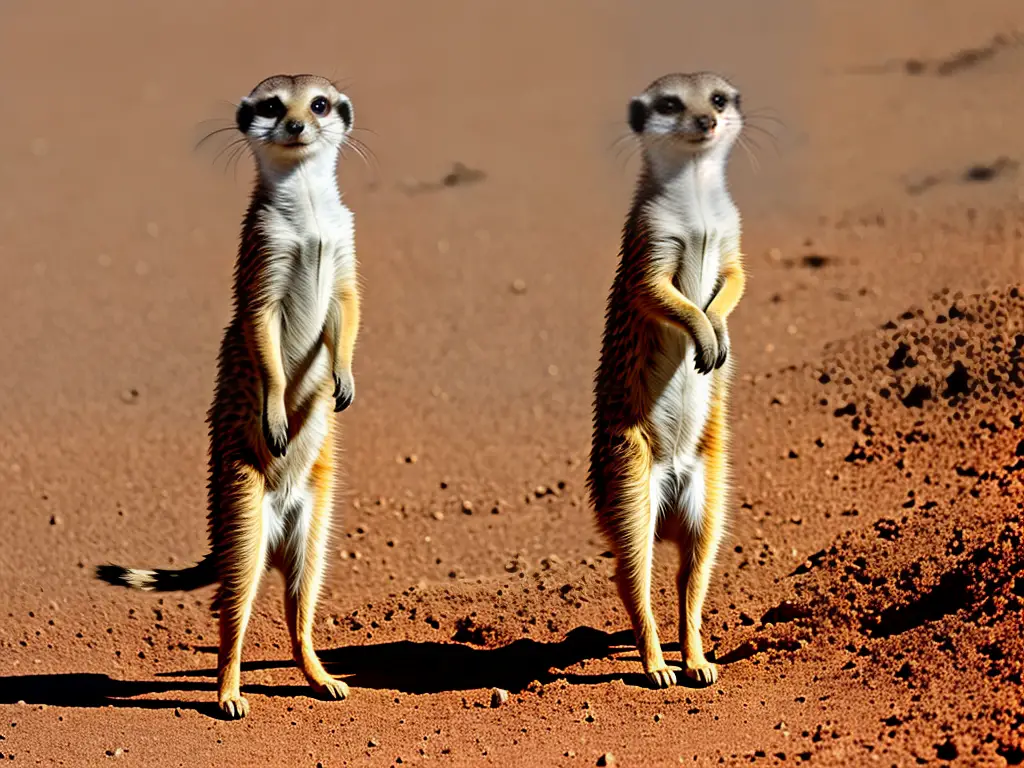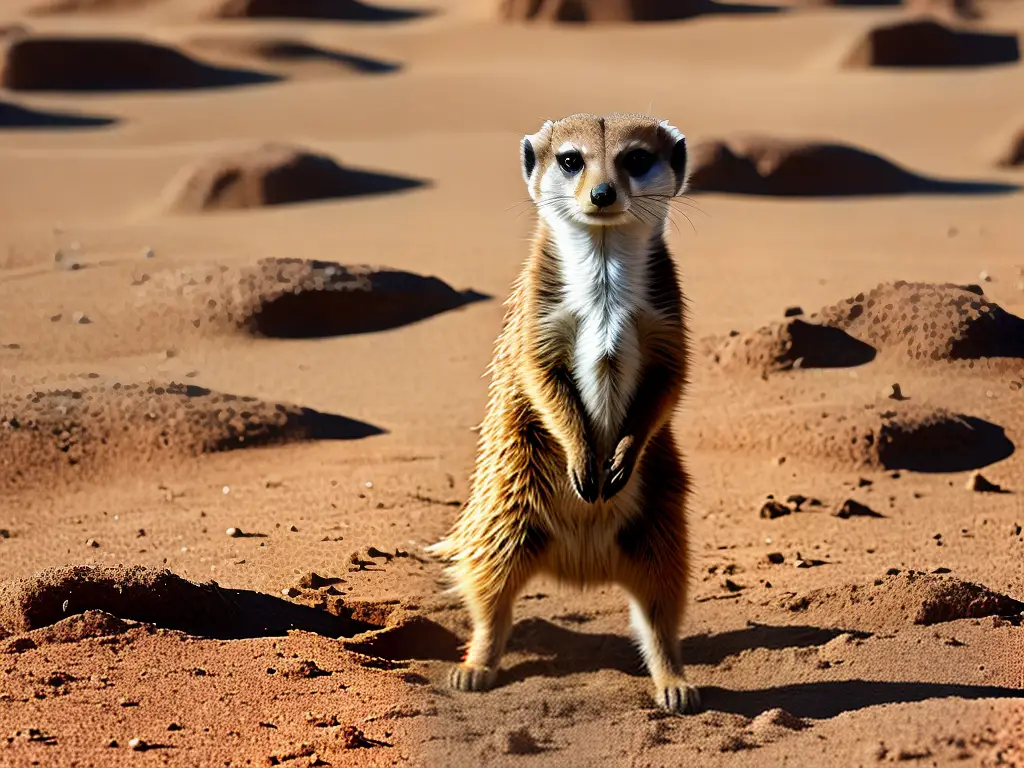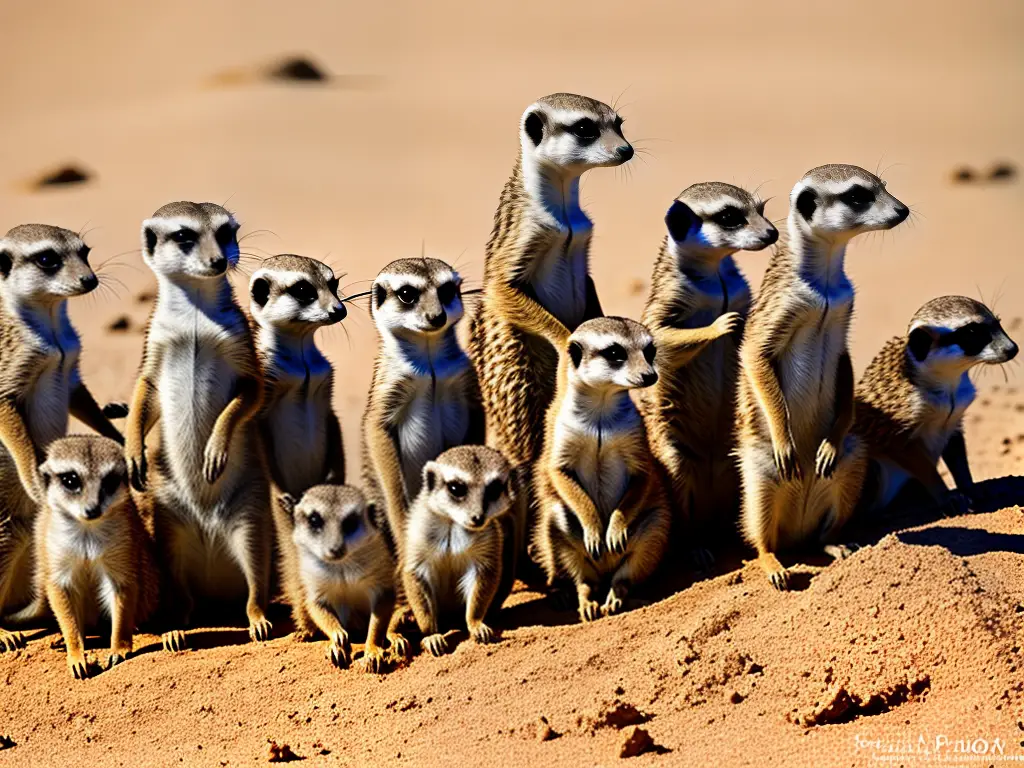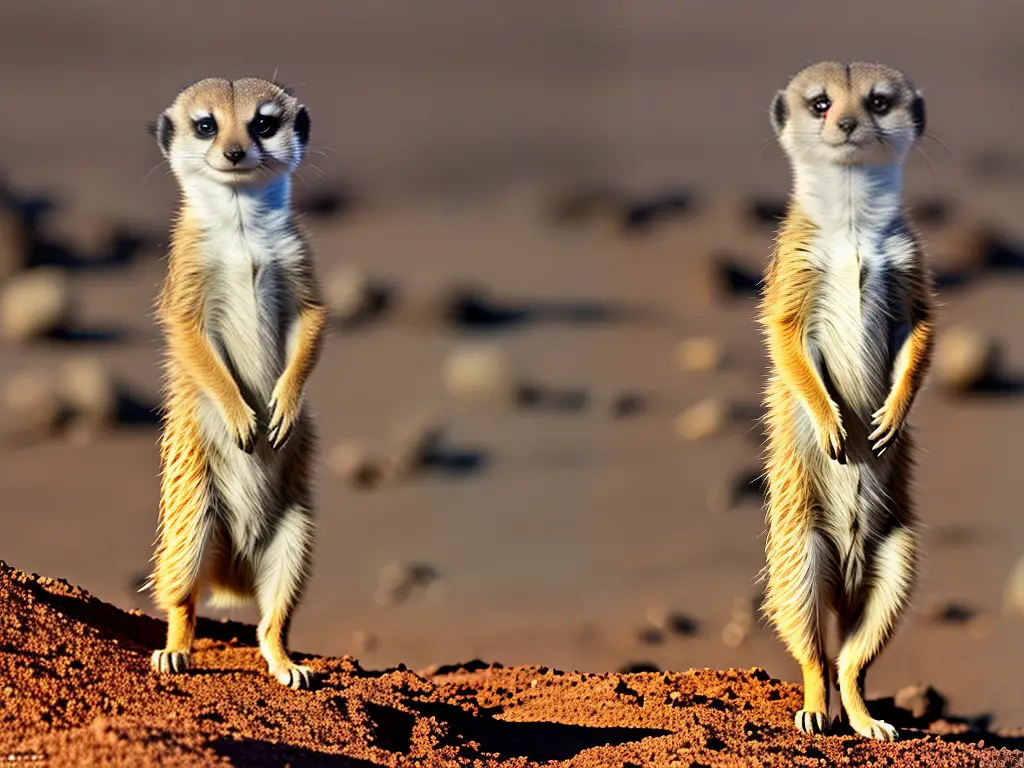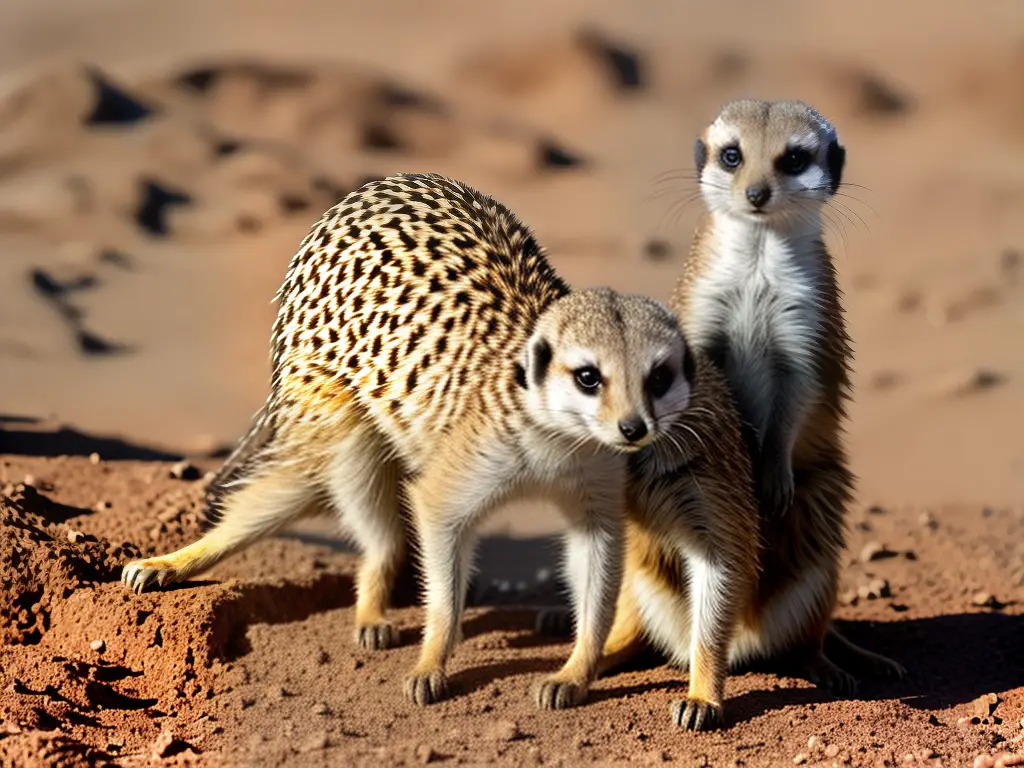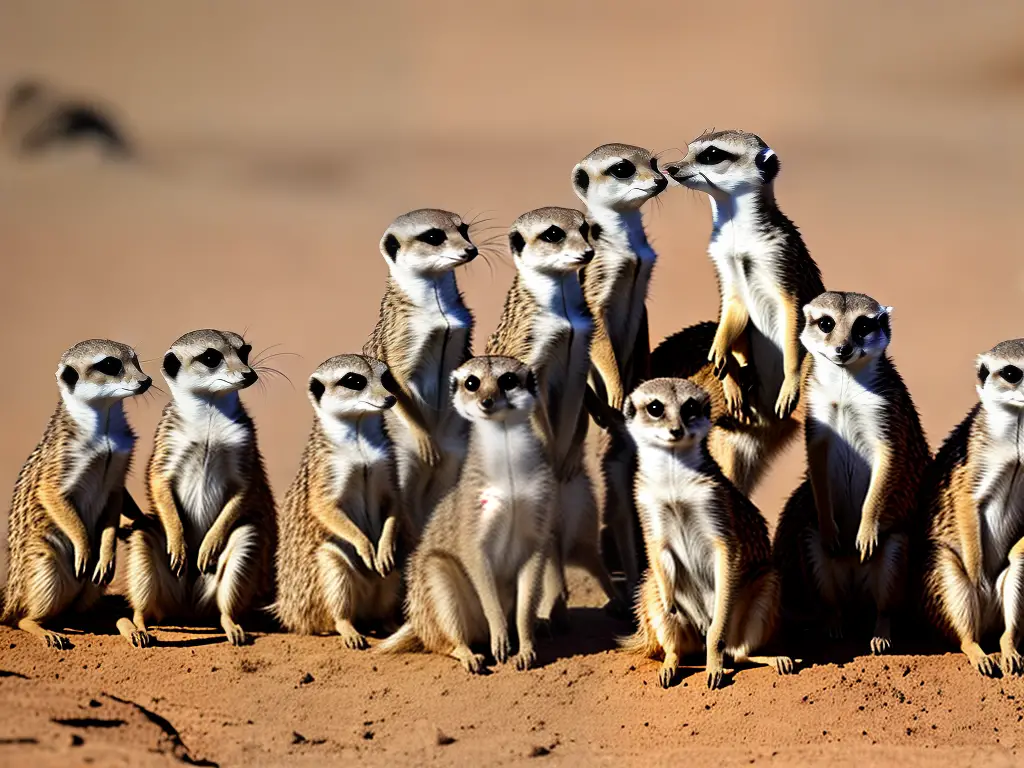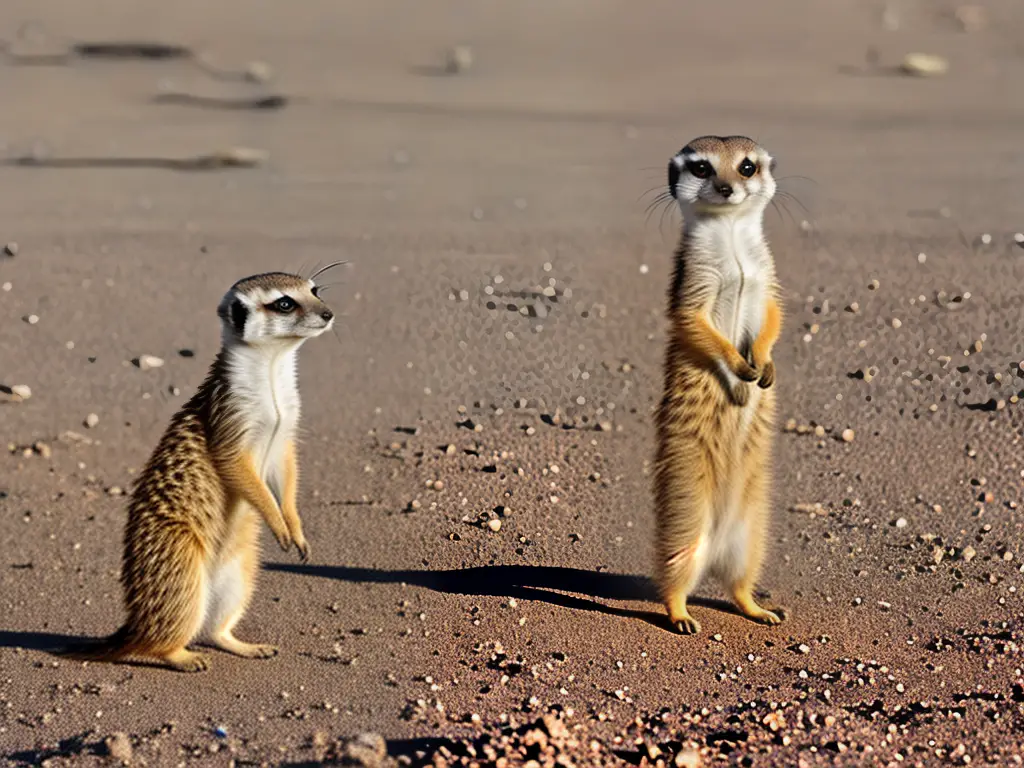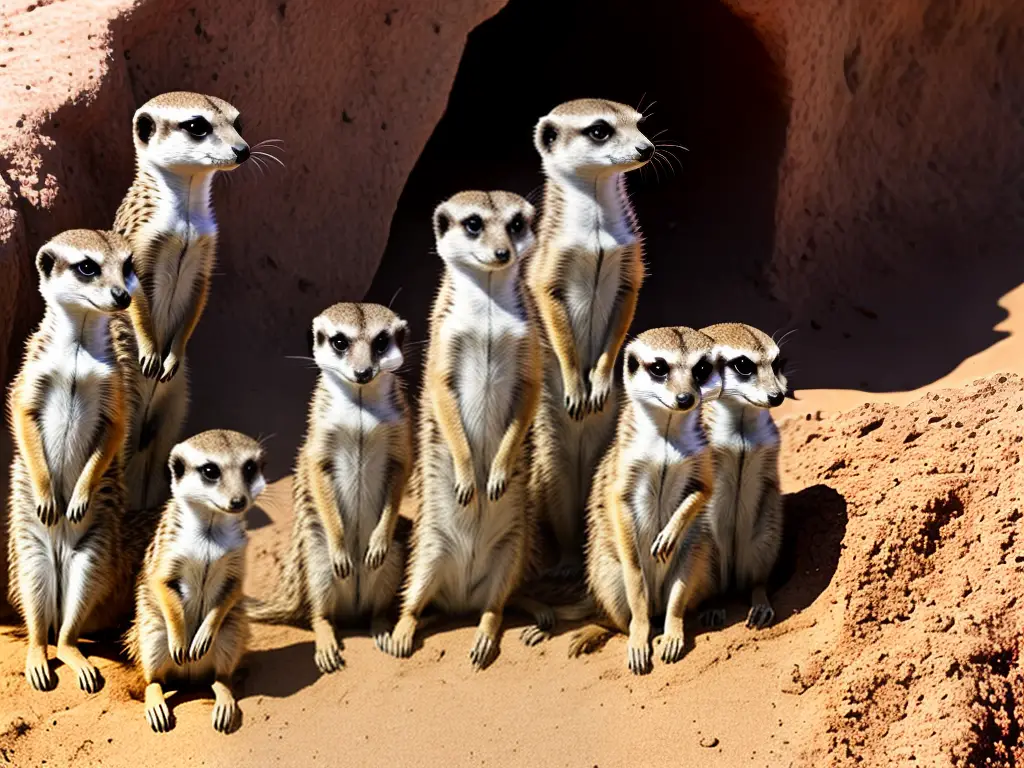Meerkats are fascinating creatures known for their unique social structure and incredible survival skills. These small mammals inhabit the harsh desert regions of Africa, where they thrive in tight-knit communities called mobs or clans. The captivating lives of meerkats involve intricate communication, cooperative living, and various survival techniques that enable them to adapt and overcome challenges in their environments. Throughout this exploration, we will delve into the intriguing world of meerkats, covering various aspects of their lives, from their social behavior and hunting strategies to their reproduction and raising of young, as well as their interactions with humans and the natural world.
Overview of Meerkats
Meerkats are small mammals belonging to the mongoose family. They are scientifically classified as Suricata suricatta, and are mainly found in arid, open plains and savannas of southern Africa, including countries like Angola, Namibia, South Africa, and Botswana. These fascinating creatures are known for their highly social behavior, living in tight-knit groups called mobs or gangs.
Meerkats have a distinctive physical appearance. They are approximately 10-14 inches long, with a long and slender tail that measures about 7-10 inches. They have a mainly brown coat of fur with black and silvery bands, which helps provide them camouflage in their natural habitats. Meerkats are equipped with sharp teeth and curved, non-retractable claws, enabling them to dig burrows and hunt for prey with ease.
Their habitats contain a complex network of burrows to provide them shelter, safety from predators, and protection from the elements. Inside these burrows, meerkats have separate areas for sleeping, raising their young, and storing food. Their sophisticated burrow systems can extend for many meters and are continuously being expanded and maintained by the meerkat colony members.
Meerkats are small, fascinating animals known for their social behavior and strong group ties. They live in groups called ‘clans’, ‘gangs’ or ‘mobs’, with each clan typically having around 20-30 members. However, some large groups can have up to 50 or more members. These clans are composed of a dominant male and female, their offspring, and other subordinate members. The dominant pair is responsible for leading the group, marking their territory, and giving birth to most of the pups.
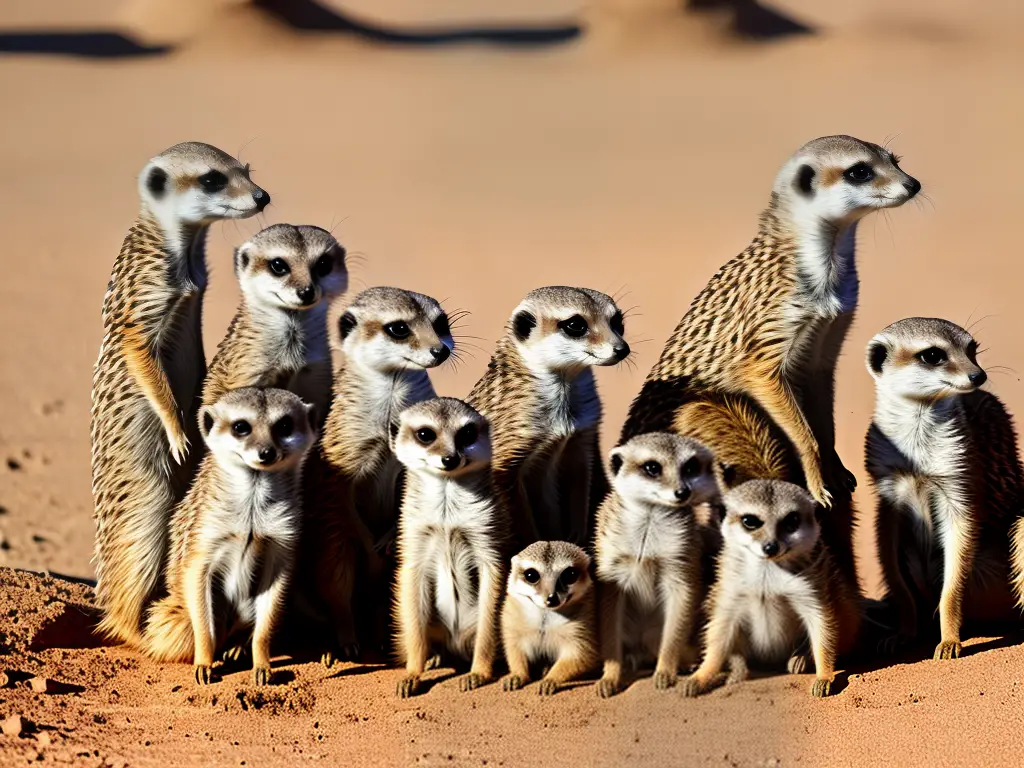
Behavior and Social Structure of Meerkats
In meerkat society, there is a strict hierarchy in which the alpha male and female are the dominant leaders. They communicate with a range of sounds and signals to ensure the safety of their group and establish territory. These fascinating creatures mainly feed on insects, reptiles, small mammals, and occasionally plants, utilizing their keen sense of smell to locate their prey. Meerkats are also known for their unique behavior of standing on their hind legs, scanning their environment for predators or food, which contributes to their interesting nature and life expectancy.
These little creatures have a fascinating daily routine. Meerkats wake up early in the morning and spend their day foraging for food, playing, and grooming each other. They take several breaks throughout the day to sunbathe and communicate with one another. In the evening, they return to their burrows to sleep in a tight group for warmth and protection. Meerkats have a strict division of duties within their clan. Some are responsible for finding food, while others stand as sentinels, watching out for potential predators.
Communication plays a vital role in the life of a meerkat. They use various vocalizations, body postures, and scents to communicate with each other. Some sounds indicate the presence of predators, such as birds of prey, while others serve to warn other clan members of potential nearby dangers. Meerkats also use scent glands located under their chins and near their anal area to mark their territory and establish their position within the group.
Meerkats are small mammals that belong to the mongoose family and live in the harsh environment of the Kalahari Desert in Africa. They have a unique diet, primarily consuming insects such as beetles, caterpillars, and spiders, as well as small vertebrates like lizards, snakes, scorpions, and small rodents. In order to survive in this challenging habitat, meerkats rely heavily on cooperation, which is essential for their well-being and survival.
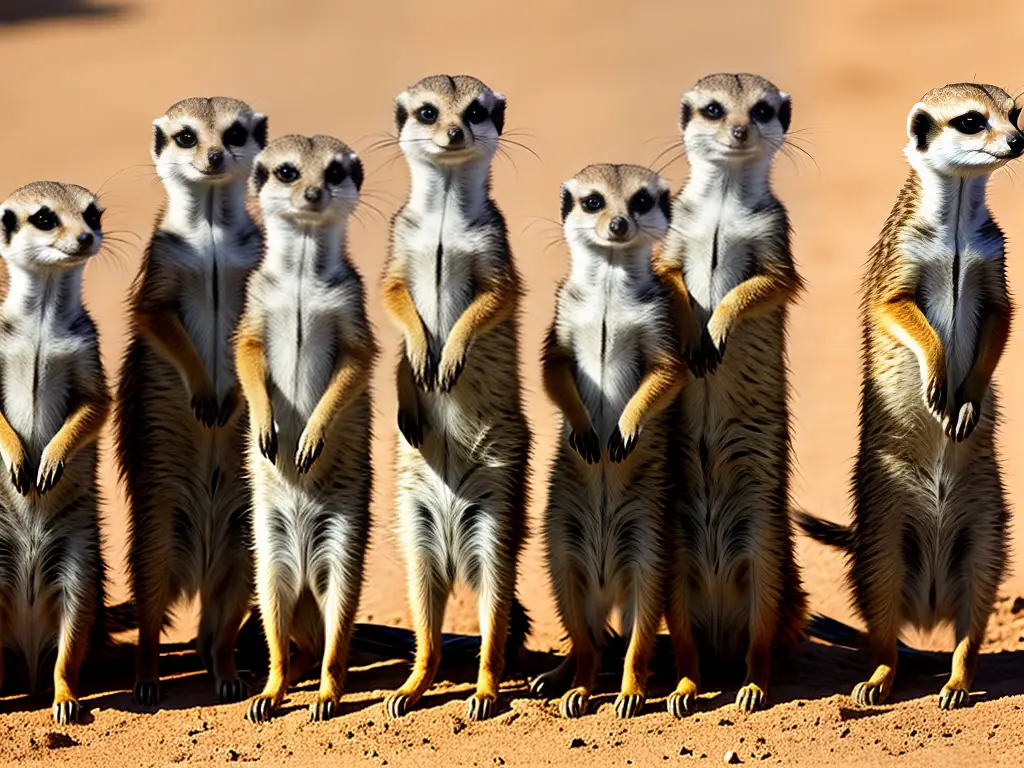
Meerkats’ Diet and Hunting Techniques
Cooperative living plays a crucial role in the lives of meerkats, as they depend on each other for food, shelter, and protection from predators. These animals are known for their altruistic behavior, meaning they prioritize the welfare of the entire clan by helping other members, sometimes even at their own expense. Meerkats share food, babysit the offspring of others, and bravely risk their lives as they stand guard while the rest of the clan forages for food. This spirit of solidarity and teamwork enables meerkats to thrive in the wild.
Hunting and foraging are essential skills for meerkats. They have sharp, curved claws that they use in digging to find their prey hiding underground. Meerkats search for food during the day and are always alert for predators while they forage. They communicate with each other using a series of squeaks and alarm calls, alerting the group to any potential dangers.
Meerkats often use a technique called ‘mobbing’ to deal with predators. When confronted by a predator, like a snake or a bird of prey, a group of meerkats will band together, making loud, aggressive noises, and physically attacking the threat. This coordinated effort can successfully drive the predator away.
Meerkats are small mammals found in southern Africa, known for their fascinating social structures and group dynamics, called ‘clans’ or ‘mobs.’ These tight-knit groups have an alpha male and an alpha female as the leaders, and cooperation among the members is essential for survival in the harsh desert environment. They work together in taking care of the young, maintaining their burrow systems, and effective communication which ensures a longer life expectancy for meerkats.
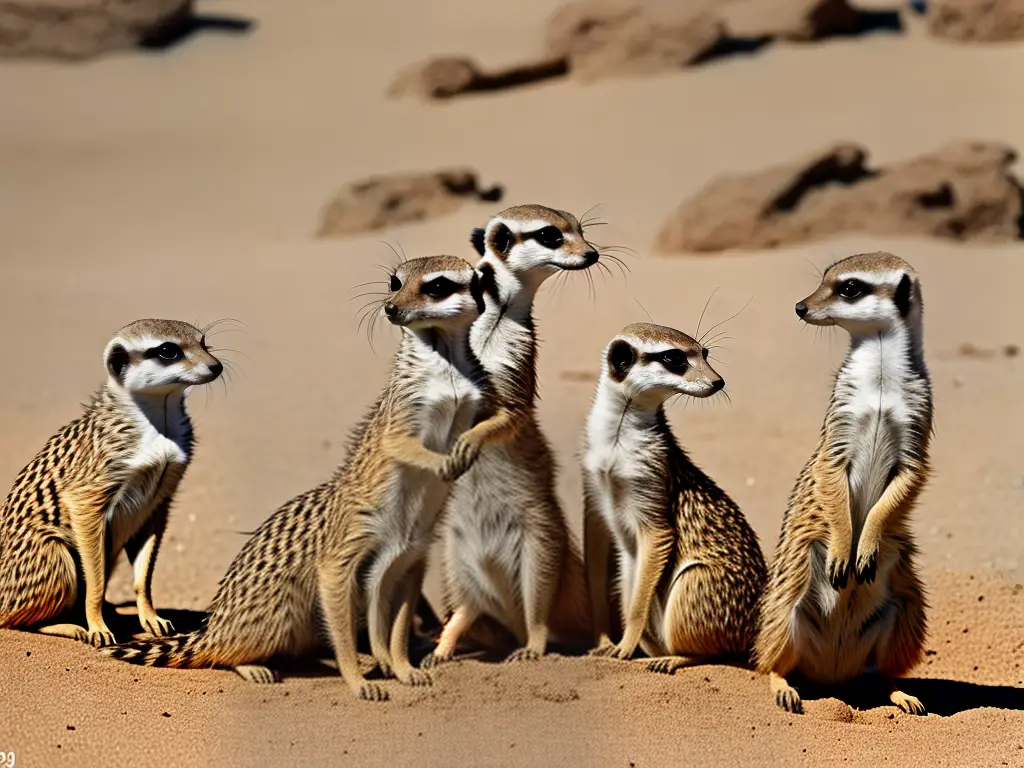
Breeding and Raising Young Meerkats
When it comes to mating habits and raising their young, meerkats exhibit unique behaviors related to their social structure. Mating between the alpha male and alpha female is more common than between other members of the group, which helps them maintain their position in the mob and ensures a strong bloodline. Overall, the exceptional cooperation and fascinating social structures of meerkats contribute to their ability to thrive in the challenging, arid conditions of Southern Africa.
The gestation period for meerkats is approximately 11 weeks, after which the female gives birth to a litter of 2 to 5 pups. Newborn meerkats are tiny, hairless, and blind, making them completely dependent on their mother and other members of the group. An interesting thing about meerkats is that they have a shared responsibility when it comes to raising their young. For the first few weeks, the pups stay in the safety of their burrow while other members take turns babysitting and keeping watch over them.
As the pups grow older, they begin to venture out of the burrow to explore the world around them. During this time, other meerkats in the group help to teach them vital skills such as foraging for food and staying alert against potential predators. All members of the mob work together to ensure the safety and well-being of the pups, as their survival is essential for the group’s continued existence.
Meerkats are small mammals found in the arid regions of Southern Africa, known for their unique social structure in which the entire group, or mob, works together to protect and raise the next generation. This teamwork and cooperation are essential for the overall health and well-being of the group. Young meerkats, called pups, learn valuable survival skills by observing and following the older members of the mob, ultimately becoming skilled hunters and protectors in their own right.
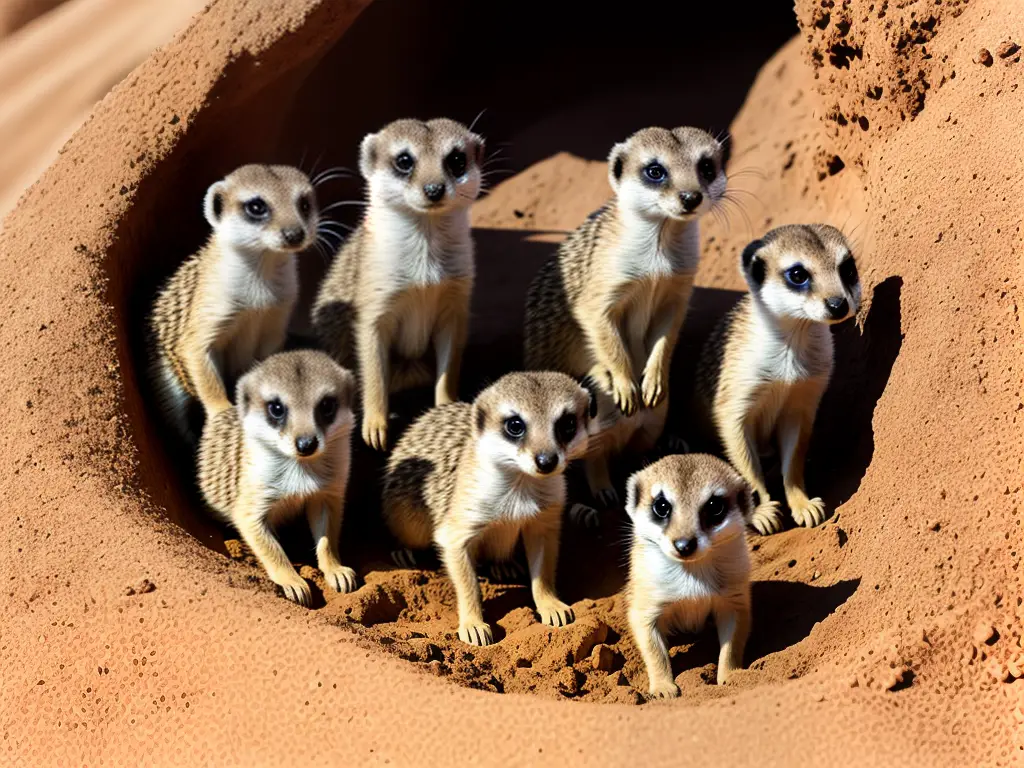
Predators and Threats: Meerkats and their Natural Enemies
Despite the strong support from their mob, meerkats still face various predators in their natural habitat. Birds of prey, such as eagles and hawks, are some of their most common predators. These birds have keen eyesight, which allows them to easily spot the small, ground-dwelling meerkats from high up in the sky. However, the meerkats’ cooperative nature and their ability to learn from one another play a crucial role in improving their chances of survival against these predators and ensuring the success of their species in the wild.
Other predators of meerkats include snakes such as cobras and puff adders. These snakes prey on meerkats by sneaking up on them while they are foraging for food, or by invading their burrows to find young meerkats. Even larger mammals like jackals and wild dogs are known to prey on meerkats, mainly targeting baby meerkats who venture too far from their family.
Meerkats have developed several strategies to protect themselves from these threats. One important tactic they use is living in large social groups called mobs or gangs. These groups of meerkats work together to keep an eye out for predators and warn each other when a potential threat is near. This is done through a variety of vocalizations, or sounds, that alert the others to the presence of a predator or other danger.
Meerkats are small, social mammals that live in the desert areas of southern Africa, and another way they protect themselves is by taking turns acting as a lookout, or sentry. A meerkat on sentry duty will stand on its hind legs, often supported by its tail, to get a better view of the surroundings. If it spots a predator, the meerkat will sound an alarm, alerting the other meerkats, who will then quickly retreat to the safety of their burrows. This cooperative behavior helps meerkats stay safe and avoid many of the threats they face in the wild.
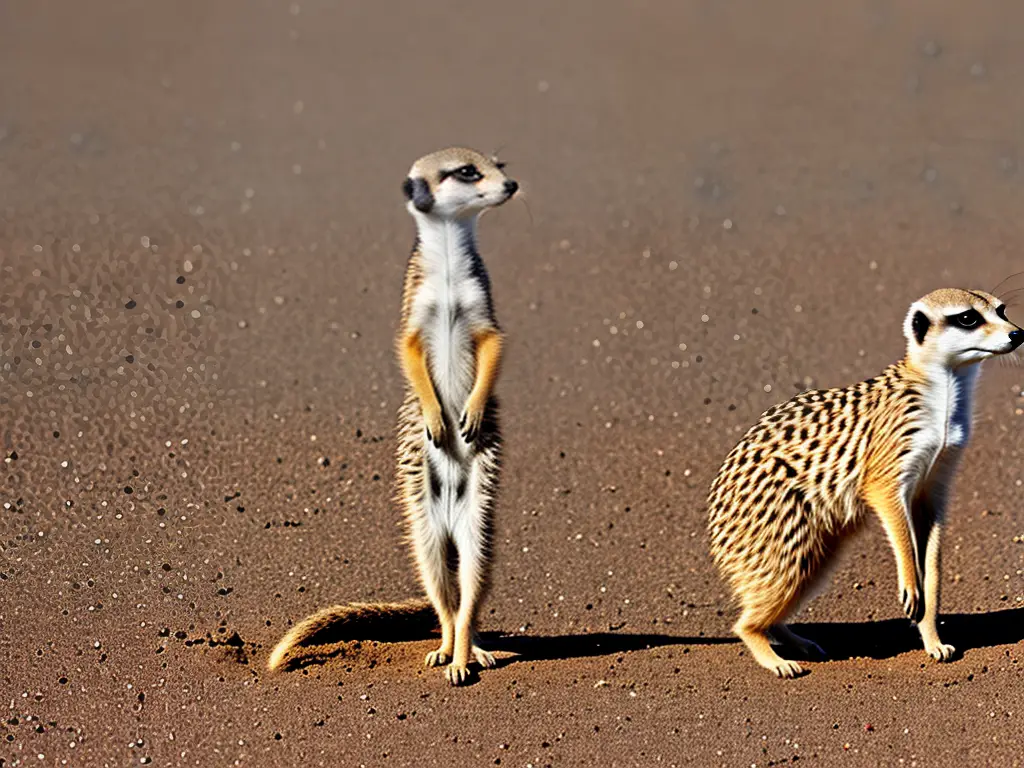
Meerkats’ Life Expectancy and Mortality Factors
The lifespan of a meerkat largely depends on whether they live in the wild or in captivity. In the wild, due to the dangers they face and their need for constant vigilance, meerkats typically live up to 6-7 years, with some individuals surviving up to 10 years or more. However, in captivity, where there are fewer threats and they benefit from better living conditions and medical care, meerkats can live longer, often reaching up to 14 years of age.
There are several factors that influence a meerkat’s life expectancy, particularly in the wild. One of the most significant factors is predation from larger animals, such as birds of prey, snakes, and jackals. Meerkats face a constant threat of being hunted as they go out in search of food or keep watch for their group, which is called a ‘mob’ or ‘gang’.
Disease can also play a major role in reducing the lifespan of meerkats, particularly in the wild, where they may not have access to medical treatment or vaccinations. Common diseases, such as tuberculosis or parasites, can be deadly for these small mammals.
Meerkats are small mammals that live in the Kalahari Desert in Southern Africa. These fascinating creatures are known for their highly social nature and unique survival techniques. However, their population and habitats are being affected by conservation issues and human impact.
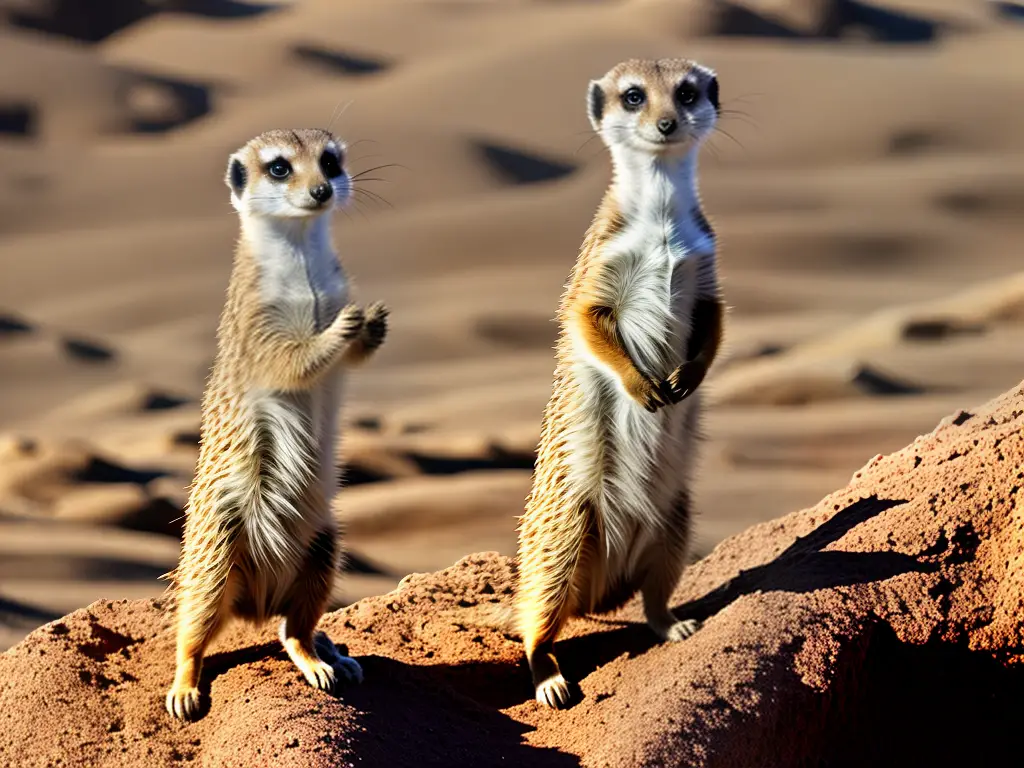
Conservation and Human Impact on Meerkats
Another factor contributing to meerkats’ mortality is environmental challenges, such as harsh weather and limited food resources. Extreme temperatures, drought, or flooding can significantly impact the availability of their natural prey, such as insects or small mammals, making it harder for meerkats to find enough food to stay healthy and survive. Due to these various factors, the life expectancy of meerkats in the wild is typically around 12-14 years, while in captivity they can live up to 15 years or more.
One of the main threats to meerkats is habitat loss due to human activities such as agriculture and development. As people expand their settlements and farms, meerkat habitats are destroyed, making it difficult for them to find food and shelter. This can lead to a decline in their population and a disruption in their social structure.
Climate change also poses a significant threat to meerkats. The Kalahari Desert is becoming hotter and drier, affecting the availability of the insects and small animals that meerkats rely on for their diet. This can cause meerkats to become malnourished, making them more susceptible to diseases and other health problems.
Meerkats are fascinating and cute little animals that have gained popularity due to their unique behaviors and appearances in pop culture. Did you know? A group of meerkats is called a ‘mob’ or ‘gang,’ and they work together to protect each other and find food. They always have a sentry, a meerkat standing guard to watch out for predators while others forage.
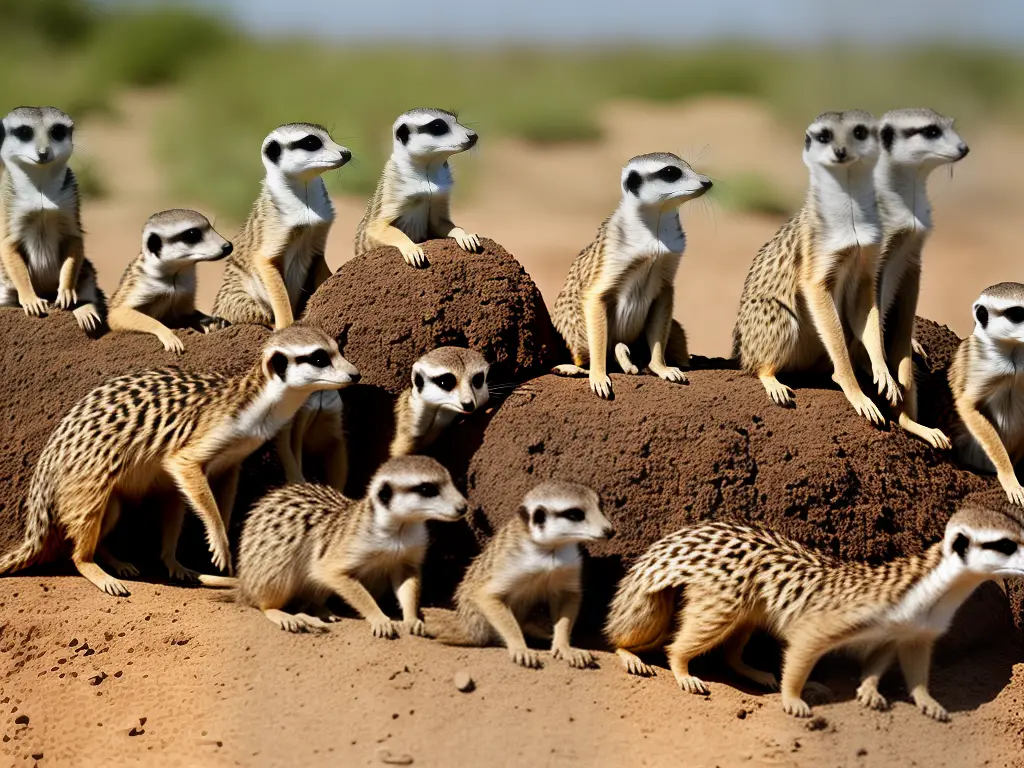
Fun Facts and Pop Culture: Meerkats in the Spotlight
Conservation efforts are essential to protect meerkats and their habitats. These efforts include raising awareness about the importance of meerkats in their ecosystem, working to prevent habitat loss, and promoting sustainable agricultural practices. By understanding the challenges faced by meerkats and taking steps to protect them, we can help ensure their survival and maintain their average life expectancy, which is about 12-14 years in the wild, for generations to come.
In pop culture, meerkats have become famous through Timon, a wise-cracking character in Disney’s The Lion King. Timon is best friends with Pumbaa, a warthog, and together they teach Simba, the main character, about their motto ‘Hakuna Matata,’ which means ‘no worries.’ This lovable pair popularized meerkats and made them a favorite among kids and adults alike.
Not only are meerkats featured in movies, but they have also starred in a TV series called Meerkat Manor. This show, which aired from 2005 to 2008, followed the lives of a gang of meerkats living in the Kalahari Desert. Viewers got to know individual meerkats’ personalities and saw their challenges as they protected their home and family from predators.
Beyond the screen, meerkats have inspired various toys, clothing, and even video games. The cute, curious, and brave nature of these small animals has captured the hearts of many. With their fascinating lives and memorable appearances in popular culture, meerkats are sure to continue engaging the minds of both kids and adults for years to come.

Throughout our journey into the captivating world of meerkats, we have discovered the remarkable characteristics and behaviors that make these animals truly unique. From their intricate social systems to their incredible teamwork in raising young and protecting each other, meerkats offer a fascinating glimpse into the world of cooperative living among animals. As we learn more about these amazing creatures, we are better positioned to appreciate their invaluable contributions to the ecosystem and develop informed strategies for conservation and management. So, the next time you see a meerkat standing guard, remember the incredible story of community and resilience that lies behind their endearing appearance.
 ” />
” />